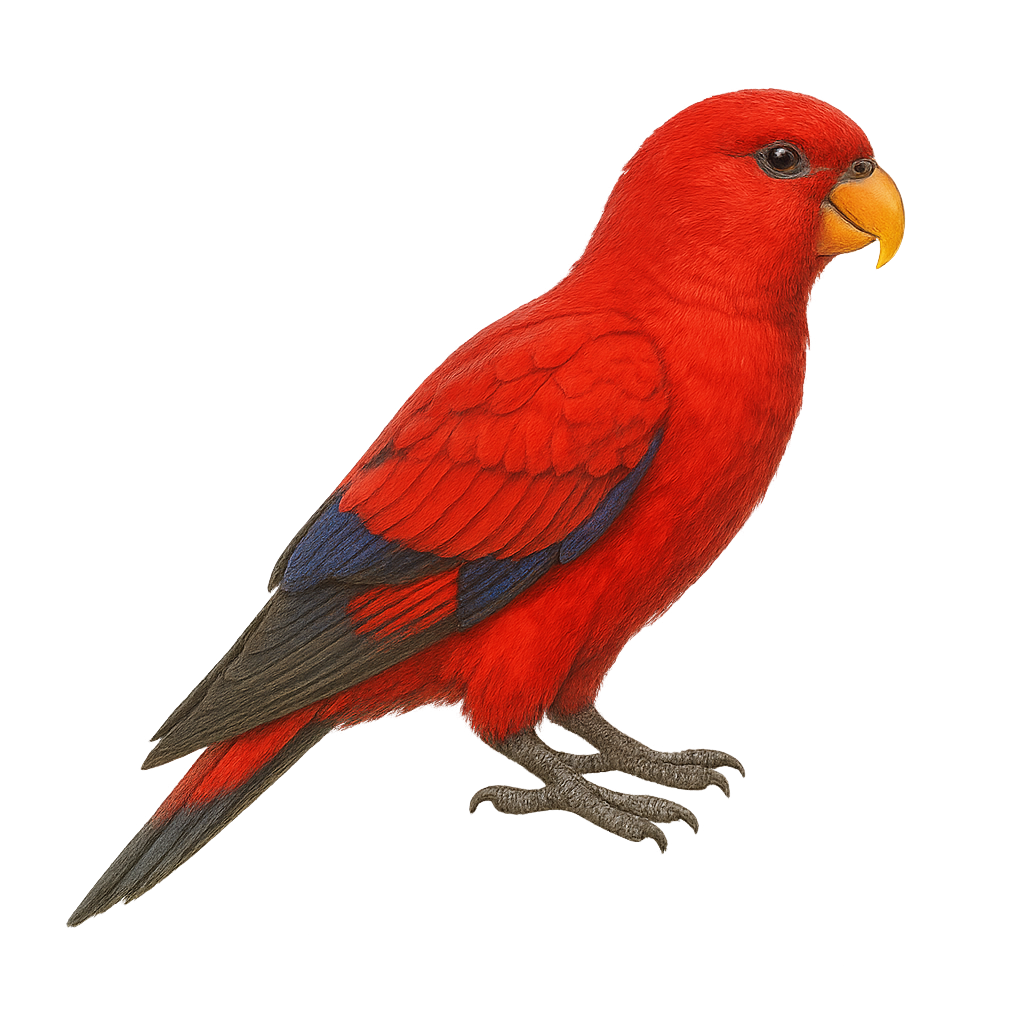Your wildlife photography guide.
Explore the red lory in detail, study its behavior, prepare your shots.
Where to observe and photograph the red lory in the wild
Learn where and when to spot the red lory in the wild, how to identify the species based on distinctive features, and what natural environments it inhabits. The WildlifePhotographer app offers tailored photography tips that reflect the red lory’s behavior, helping you capture better wildlife images. Explore the full species profile for key information including description, habitat, active periods, and approach techniques.
Red Lory
Scientific name: Trichoglossus borneus

IUCN Status: Least Concern
Family: PSITTACIDAE
Group: Birds
Sensitivity to human approach: Suspicious
Minimum approach distance: 5 m
Courtship display: June to July
Incubation: 22-24 jours
Hatchings: June to August
Habitat:
Tropical rainforests, mangroves, plantations
Activity period :
Primarily active during the day, with peak activity in the morning and late afternoon.
Identification and description:
The Red Lory, or Trichoglossus borneus, is a vibrant parrot native to the Moluccas in Indonesia. This lory is known for its striking red plumage, highlighted with blue and black on its wings and tail. Measuring about 30 cm in length, it has a strong, curved beak, perfect for feeding on nectar, fruits, and flowers. Sociable and noisy, it lives in groups and frequents tropical rainforests, mangroves, and plantations. Its flight is fast and direct, often accompanied by loud calls. Although popular in the pet trade, its wild population is threatened by deforestation and trapping.
Recommended lens:
400 mm – adjust based on distance, desired framing (portrait or habitat), and approach conditions.
Photography tips:
To photograph the Red Lory, use a 400mm lens or longer to capture the intricate details of its vibrant plumage. Look for it in tropical rainforests or mangroves, where it is often active during the day. Be patient and discreet, as it can be suspicious of humans despite its sociable nature. Use a fast shutter speed to freeze its quick and direct flight.
The WildlifePhotographer App is coming soon!
Be the first to explore the best nature spots, track rutting seasons, log your observations, and observe more wildlife.
Already 1 430 wildlife lovers subscribed worldwide

